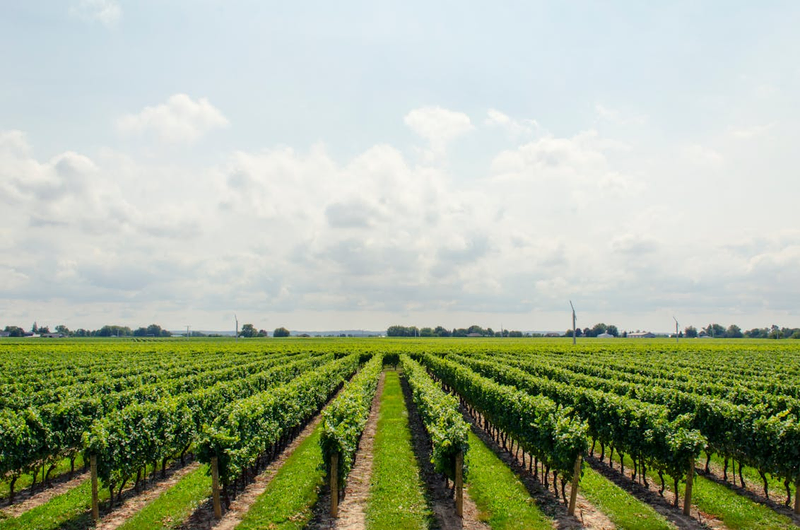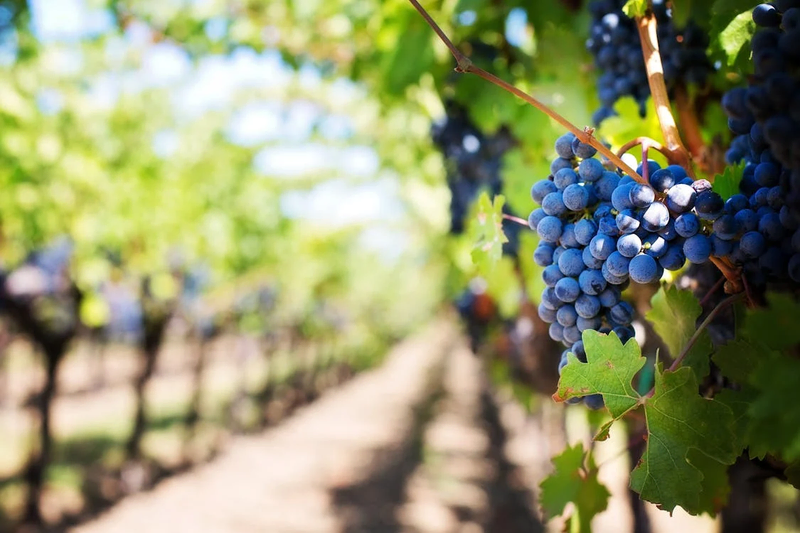
The Ultimate Guide to Napa Reserve Wines: What Makes Them Unique and Where to Enjoy Them
Posted at 17:51h
in Blog
Napa Valley is synonymous with luxury wines, and among these, reserve wines hold a special place.
Put simply: Reserve wines are the best of the best.
But not all wines labeled “reserve” are created equal. That’s why it’s vital to educate yourself on what true reserve wines are.
Produced in limited quantities, reserve wines represent the pinnacle of winemaking expertise. They feature the best grapes, meticulous aging processes, and unparalleled attention to detail.
For those planning a visit to California’s wine country, understanding what sets reserve wines apart – especially in the Napa region – can enhance your tasting experience and appreciation for this boundlessly beautiful wine country.
Let’s explore what sets Napa Valley reserve wines apart, plus how (and where) to best enjoy them.
What is a reserve wine?
In the world of wine, the term “reserve” can mean different things depending on the country of origin and the winery’s practices. Here, we’ll explore the nuances of what constitutes a reserve wine and how it varies from place to place.
Historical origins of reserve wines
Historically, the concept of a reserve wine originated from winemakers setting aside their best barrels of a vintage for extended aging and special bottling.
Better grapes and more refined winemaking techniques gave these wines superior quality. The idea was to “reserve” these first-class wines for later release, often during special occasions or for esteemed clients.
This tradition allowed winemakers to showcase their finest work and highlight the exceptional qualities of a particular vintage.
These reserved wines were typically aged longer, allowing for the development of more complex flavors and aromas. The practice eventually evolved into a formal classification in many wine-producing regions, signifying a wine of higher quality and prestige.

Implications of the reserve label
Despite the lack of formal regulation in some countries (including the U.S.), Napa Valley producers often adhere to high standards when labeling wine as “reserve”.
These wines typically feature grapes from the best vineyard blocks, undergo extended aging in the finest oak barrels, and represent the ultimate expressions of the winery’s capabilities.
The reserve label often indicates a wine that has received extra care and attention, embodying the winemaker’s dedication to excellence and the unique characteristics of the region.
The process of selecting grapes for reserve wines is scrupulous. It often involves handpicking the best clusters from the most favorable vineyard sites. These grapes are then vinified with great care, using traditional techniques that emphasize quality over quantity.
The resulting wines are aged in the best barrels, which are chosen for their ability to enhance the wine’s flavors and provide the right amount of oxygen exposure during aging.

Reserve wine classifications around the world
The term “reserve” can have different meanings and regulations depending on the country, which can affect how these wines are produced and perceived.
United States
In the United States, the term “reserve” doesn’t have a regulated definition. This means that winemakers have the flexibility to use the term as they see fit, which can sometimes lead to inconsistencies.
However, reputable wineries, especially in regions like Napa Valley, use the term to signify wines that have undergone extra care and attention, using premium grapes and diligent aging processes.
In these cases, a reserve wine often represents the best of what a winery can offer.
Europe
In Europe, the term is more strictly regulated, with specific aging requirements and quality standards that must be met. For instance:
Spain: Spanish Reserva wines must be aged for at least 3 years, with a minimum of 6 months in oak barrels.
This is part of a broader aging classification that includes Crianza (younger wines aged for a shorter period) and Gran Reserva (wines aged even longer, often 5 years or more).
These regulations ensure that the term “Reserva” signifies a higher quality wine with more developed flavors and complexity.
Italy: Italian Riserva wines also have stringent aging requirements. For example, Chianti Riserva must be aged for at least 2 years, and Barolo Riserva requires a minimum of 5 years of aging before release.
These extended aging periods allow the wines to develop deeper flavors and more complex structures, distinguishing them from their non-Riserva counterparts.
France: In France, the concept of reserve wines is integrated into the broader system of appellation d’origine contrôlée (AOC) regulations, which govern many aspects of wine production, including aging requirements.
While the term “reserve” itself is less commonly used as a formal designation, many top producers will label their best and longest-aged wines with terms like “Vieilles Vignes” (old vines) or by the specific vineyard name.
For example, Bordeaux wines labeled as “Grand Vin” or “Grand Cru” are often equivalent to reserve wines, typically sourced from the best vineyard plots and aged for longer periods to develop complexity and depth.
Austria: Austria requires reserve wines to have a minimum alcohol content of 13%, certifying a certain level of ripeness and concentration in the grapes.
Other Countries
Chile, Australia & New Zealand: Other countries not listed above, like Chile, Australia, and New Zealand, don’t have formal regulations for reserve wines. But, most winemakers respect the implied meaning of the word “reserve” and typically use it to describe their very best offerings.
The marketing aspect
It’s also important to understand that the term “reserve” can sometimes be used more liberally as a marketing tool, without significant differences in the production process.
Some producers might label a wine as reserve simply to suggest a higher quality product and justify a higher price point. This is why it’s important for customers to be discerning and knowledgeable about the wineries they choose.
To make sure you’re getting a true reserve wine, look for producers known for their integrity and commitment to quality.
Trusted wineries will provide detailed information about their reserve wines, including the specific vineyard sources, aging processes, and any special techniques used in production.

Why visit Napa Valley for reserve wines?
Napa Valley’s unique combination of natural beauty, rich history, and dedication to winemaking excellence makes it a must-visit destination for wine lovers. The region’s commitment to quality and innovation means that its reserve wines are among the best in the world.
Visiting Napa Valley allows you to immerse yourself in the winemaking process, from grapevine to glass. The stunning scenery, warm hospitality, and exceptional wines create an unforgettable experience that goes beyond mere tasting.
Whether you’re exploring the rolling hills, enjoying a picnic among the vines, or learning about the intricacies of wine production, Napa Valley is the perfect place to unplug from the hustle and bustle of everyday life and reconnect with nature.

Characteristics of Napa Valley Reserve wines
Napa Valley reserve wines are distinguished by several key characteristics that set them apart from other wines. These are a result of the region’s ideal growing conditions, historical winemaking practices, exacting aging processes, and limited production.
Each of these elements contributes to the exceptional quality and character of Napa Valley reserve wines – which you can taste in every remarkable sip.
Ideal terroir and quality grapes
Napa Valley’s unique terroir is a significant factor in the exceptional quality of its reserve wines. The region benefits from a Mediterranean climate, with warm days and cool nights that are ideal for grape growing.
The diverse soil types, ranging from volcanic to alluvial, provide optimal conditions for different grape varieties.
This combination of climate and soil helps produce grapes with concentrated flavors and balanced acidity, which are essential for crafting high-quality reserve wines.
Historical winemaking culture
Napa Valley’s winemaking history dates back to the 19th century, and its culture is steeped in both tradition and innovation. Many of the valley’s wineries are family-owned and have been passed down through generations, each one committed to perfecting their craft.
This deep-rooted winemaking culture ensures that reserve wines are produced with a high level of skill and dedication, reflecting the heritage and passion of the region’s vintners.

Limited production
One of the defining features of reserve wines is their limited production.
Winemakers focus on quality over quantity, selecting only the best grapes and using meticulous techniques to craft these wines.
This limited production allows for greater control over the winemaking process, resulting in wines with exceptional depth, complexity, and character.
Meticulous aging process
Reserve wines typically undergo extended aging compared to standard wines.
This aging process often takes place in high-quality oak barrels, which impart additional flavors and complexity to the wine.
The time spent aging allows the wine’s tannins to soften and its flavors to integrate, resulting in a smoother, more refined drinking experience. The painstaking aging process is a hallmark of reserve wines, highlighting the winemaker’s commitment to producing a superior product.
Tasting Napa Valley reserve wines like a true connoisseur
Whether you’re a seasoned wine enthusiast or new to the world of reserve wines, tasting these offerings can be an enlightening experience. Here are some tips to help you fully appreciate Napa Valley’s reserve wines.
Visit a maybe use top-tier winery
To truly understand and appreciate reserve wines, visiting a first class winery is essential.
Many wineries in Napa Valley offer specialized tastings and tours that focus on their reserve selections. During these tastings, you can learn about the winemaking process, the specific vineyard’s practices, and the unique characteristics of each wine from knowledgeable staff.
Remember the 5 S’s: Seeing, Swirling, Sniffing, Sipping, and Savoring
Engaging all your senses is key to fully experiencing a wine.
- Seeing: Start by observing the wine’s color and clarity, which can provide clues about its age and varietal.
- Swirling: Next, swirl the wine in your glass to release its aromas.
- Sniffing: Take a moment to inhale deeply and identify the different scents.
- Sipping: Finally, take a sip and let the wine coat your palate, paying attention to its flavors and texture.
- Savoring: After swallowing, savor the finish and note how long the flavors linger.
Pair with local cuisine
Pairing reserve wines with local cuisine can enhance your tasting experience. Napa Valley’s rich culinary scene offers an array of dishes that complement the region’s wines.
Consider pairing a rich Cabernet Sauvignon with a juicy steak or a creamy risotto. The right food pairing can heighten the flavors of both the wine and the dish, creating a harmonious tasting experience.
Seek insider knowledge
Learning from the experts can deepen your appreciation for reserve wines. Many wineries offer educational tours and tastings led by winemakers or sommeliers.
These experiences provide valuable insights into the nuances of wine production and tasting. Additionally, attending wine events or joining a wine club can offer further opportunities to expand your knowledge and taste a variety of reserve wines.
Ask your favorite winery for other recommendations of places to taste, if you like their wine, they can suggest others of similar quality.
Experience Napa Valley reserve wines at Davis Estates – enjoy the best reserve wine experience
When it comes to really enjoying a reserve wine-tasting experience to the fullest, there’s no place like Napa Valley. From the breathtaking scenery to the long-standing winemaking culture, it’s no surprise thatthe tourism industry has been growing in recent years.
The region has a host of world-class wineries that are deeply committed to quality, both in the wines they produce and the holistic experience they deliver to their visitors throughout the season.
At Davis Estates, we’re passionate about offering a holistic wine-tasting experience that’s just for you. From strolling our idyllic grounds to carefully pairing our quality wines with a delicious dish lovingly prepared by our remarkable chefs, you’ll have a trip of a lifetime on our family ranch.
As well as hostingexciting wine-tasting events that vary from season to season, we also offer a variety of wine-tasting experiences, so you know you’ll find something to suit your desires:
- Napa Cave Tour and Tasting: Explore our underground caves and enjoy a selection of our finest reserve wines.
- Cabernet Sauvignon AVA Exploration: Discover the nuances of Cabernet Sauvignon from different Napa Valley AVAs.
- Collector’s Tasting: Taste our limited-edition reserve wines, each carefully selected for its exceptional quality.
- VIP Tasting Experience: Enjoy a tailored over the top tasting experience with one of our expert sommeliers.
- Estate Wine and Food Pairing: Indulge in a curated pairing of our reserve wines with gourmet bites prepared by our chefs.

A visit to Napa Valley is not complete without experiencing its reserve wines.
At Davis Estates, we invite you to a personalized wine-tasting experience that showcases the best of our region. From our expertly-crafted reserve wines to our serene estate, every aspect of your visit is designed to provide an unforgettable experience.
Whether you’re planning an extensive tour of Napa Valley or a quick weekend getaway, make sure to include Davis Estates in your itinerary. Our passion for winemaking and dedication to excellence are evident in every bottle we produce.
Our reserve Cabernet Sauvignon has been barrel-aged for 22 months in French oak barrels, which you canshop here. Come taste the difference for yourself and discover why Napa Valley reserve wines are truly exceptional.
Get in touch today orrequest your wine-tasting experience for the trip of a lifetime in California’s wine country.
